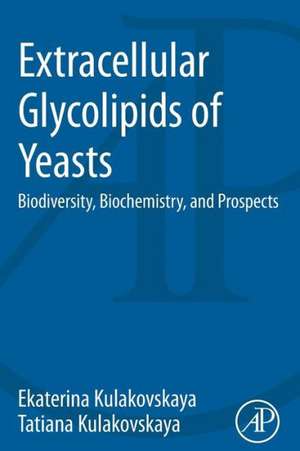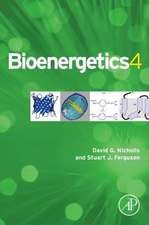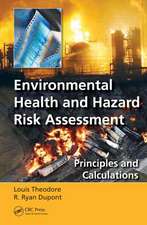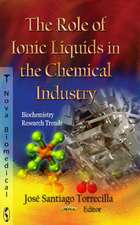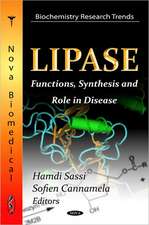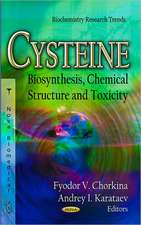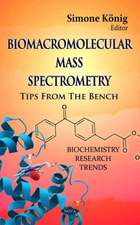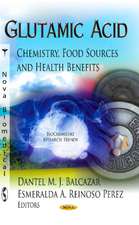Extracellular Glycolipids of Yeasts: Biodiversity, Biochemistry, and Prospects
Autor Ekaterina Kulakovskaya, Tatiana Kulakovskayaen Limba Engleză Paperback – 15 ian 2014
Studies of extracellular glycolipids of yeast now draw the attention of researchers in life science and biotechnology due to numerous recently revealed biological properties of these compounds. These compounds are scientifically and practically promising in medicine and agriculture due to their biosurfactant and fungicidal properties, as well as a number of other biological activities.Extracellular Glycolipids of Yeastsgives researchers studying biochemistry of microorganisms and related biologically active compounds a much-needed guide to the basic data that will aid in these increasingly generative pursuits.
- Provides a clear overview of the basic data on yeast biosurfactants using a simple survey-style approach
- Delivers comprehensive view of biochemistry, biological activity, and practical application of yeasts to aid in their scientific and practical use
- Clarifies and simplifies the complex topic of glycolipids, and its often-confusing terminology
Preț: 381.34 lei
Nou
Puncte Express: 572
Preț estimativ în valută:
72.99€ • 76.69$ • 61.34£
72.99€ • 76.69$ • 61.34£
Carte tipărită la comandă
Livrare economică 12-26 martie
Preluare comenzi: 021 569.72.76
Specificații
ISBN-13: 9780124200692
ISBN-10: 0124200699
Pagini: 124
Ilustrații: Illustrated
Dimensiuni: 152 x 229 x 7 mm
Greutate: 0.18 kg
Editura: ELSEVIER SCIENCE
ISBN-10: 0124200699
Pagini: 124
Ilustrații: Illustrated
Dimensiuni: 152 x 229 x 7 mm
Greutate: 0.18 kg
Editura: ELSEVIER SCIENCE
Cuprins
Introduction
Chapter 1: Occurrence and structure of fungal extracellular glycolipids
1.1. Glycolipid secretion in eumycetes
1.2. The structures of extracellular glycolipids of eumycetes
1.2.1. Cellobiose lipids
1.2.2. Mannosylerythritol lipids, MELs
1.2.3. Sophorolipids
1.2.4. Rare extracellular fungal glycolipids
Chapter 2: Methods of study of extracellular glycolipids
2.1. The culture media and methods to increase the yield of extracellular glycolipids
2.2. Purification methods
2.3. Structure study by NRM-spectroscopy and mass-spectrometry
2.4. Methods for studying physical and chemical properties, antifungal
and membrane-damaging activities
Chapter 3: Physical and chemical properties of extracellular glycolipids
3.1. Solubility
3.2. Stability
3.3. Molecular masses
3.4. Surface properties
3.5. Interaction with artificial membranes
Chapter 4: Biological activities of extracellular yeast glycolipids
4.1. Antifungal activity of cellobiose lipids
4.1.1. Discovery of antifungal activity of cellobiose lipids
4.1.2. Antifungal activities and structure peculiarities
4.2. Membrane – damaging activity of cellobiose lipids
4.3. Biological activities of MELs and sophorolipids
Chapter 5: Biosynthesis and degradation of extracellular yeast glycolipids
5.1. Biosynthesis of cellobiose lipids
5.2. Biosynthesis of sophorolipids
5.3. Biosynthesis of MELs
5.4. Degradation of extracellular yeast glycolipids
Chapter 6: Applied prospects of cellobiose lipids, mannosylerythritol lipids, and sophorolipids
6.1. Membrane-damaging agents for research purposes
6.2. Prospects for medicine, environmental protection, agriculture and industry
6.3. Commercial products containing yeast extracellular glycolipids
7. Supplement: selected techniques of purification and assay of extracellular yeast glycolipids
7.1. Culture media
7.2. Chromatography
7.5. Fungicide activity assay
7.6. Membrane-damaging activity assay
8. References
Chapter 1: Occurrence and structure of fungal extracellular glycolipids
1.1. Glycolipid secretion in eumycetes
1.2. The structures of extracellular glycolipids of eumycetes
1.2.1. Cellobiose lipids
1.2.2. Mannosylerythritol lipids, MELs
1.2.3. Sophorolipids
1.2.4. Rare extracellular fungal glycolipids
Chapter 2: Methods of study of extracellular glycolipids
2.1. The culture media and methods to increase the yield of extracellular glycolipids
2.2. Purification methods
2.3. Structure study by NRM-spectroscopy and mass-spectrometry
2.4. Methods for studying physical and chemical properties, antifungal
and membrane-damaging activities
Chapter 3: Physical and chemical properties of extracellular glycolipids
3.1. Solubility
3.2. Stability
3.3. Molecular masses
3.4. Surface properties
3.5. Interaction with artificial membranes
Chapter 4: Biological activities of extracellular yeast glycolipids
4.1. Antifungal activity of cellobiose lipids
4.1.1. Discovery of antifungal activity of cellobiose lipids
4.1.2. Antifungal activities and structure peculiarities
4.2. Membrane – damaging activity of cellobiose lipids
4.3. Biological activities of MELs and sophorolipids
Chapter 5: Biosynthesis and degradation of extracellular yeast glycolipids
5.1. Biosynthesis of cellobiose lipids
5.2. Biosynthesis of sophorolipids
5.3. Biosynthesis of MELs
5.4. Degradation of extracellular yeast glycolipids
Chapter 6: Applied prospects of cellobiose lipids, mannosylerythritol lipids, and sophorolipids
6.1. Membrane-damaging agents for research purposes
6.2. Prospects for medicine, environmental protection, agriculture and industry
6.3. Commercial products containing yeast extracellular glycolipids
7. Supplement: selected techniques of purification and assay of extracellular yeast glycolipids
7.1. Culture media
7.2. Chromatography
7.5. Fungicide activity assay
7.6. Membrane-damaging activity assay
8. References
